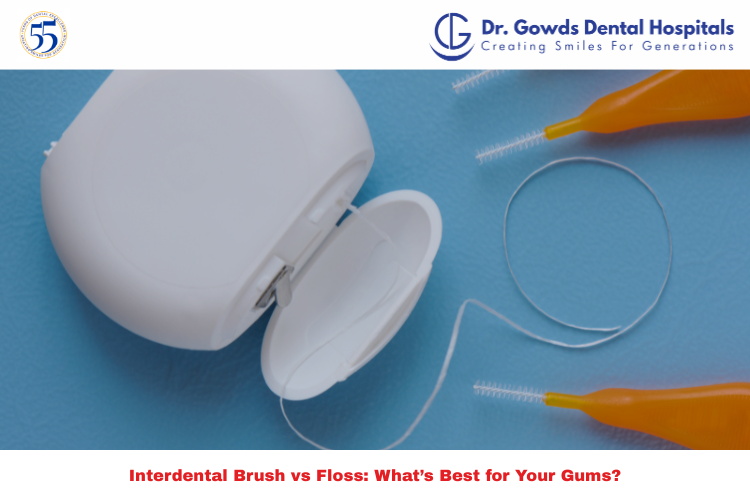Schedule Appointment




Maintaining oral hygiene goes beyond regular brushing. While your toothbrush cleans the surface of your teeth, it often misses the spaces in between—where food particles and plaque love to hide. These hard-to-reach areas, known as interdental spaces, are prone to bacteria buildup that can lead to cavities, gum inflammation, and even periodontal disease.
That’s where interdental brushes and dental floss come into play. These tools are designed specifically to clean between teeth, but many people wonder: which one is better? Is one more effective than the other? Can they be used together? In this blog, we dive deep into the pros and cons of interdental brushes vs floss to help you make an informed choice based on your oral care needs.
Interdental brushes are small brushes that resemble tiny bottle cleaners. They are designed to slide into the spaces between your teeth to remove plaque and food debris. The bristles are soft and attached to a thin, flexible wire, which is connected to a small plastic or rubber handle for easy grip.
These brushes come in a variety of sizes to suit different gap widths. Choosing the right size is important for effective cleaning and to avoid damaging your gums.
Dental floss is a thin string made from nylon or Teflon, often waxed or flavored. It’s used to slide between the teeth to scrape away plaque and food particles. Flossing is considered a fundamental component of oral hygiene by dental professionals.
There are different types of floss available: traditional string floss, floss picks, and even water flossers (although the latter is considered a separate category).
The short answer is—it depends. Each has unique benefits depending on your dental anatomy, lifestyle, and existing oral conditions.
Here’s a more detailed comparison to help you decide:
| Feature | Interdental Brush | Dental Floss |
| Ease of Use | Easier, especially for people with braces or limited mobility | Requires dexterity and good technique |
| Best For | Wider gaps, gum disease, braces, implants | Tight spaces between teeth |
| Cost | Slightly more expensive upfront but reusable | Generally cheaper but single-use |
| Sustainability | Reusable models are eco-friendlier | Many are single-use and non-recyclable |
| Cleaning Efficiency | Covers a larger area between teeth | Excellent for tight contact areas |
Dental professionals often recommend a personalized approach to interdental cleaning. Depending on your dental health:
It’s best to consult with your dentist or hygienist to identify what combination works for your unique situation.
Interdental Brush Tips:
Flossing Tips:
The best tool for interdental cleaning is the one you’ll use consistently and properly. Whether it’s interdental brushes vs floss, or a combination of both, regular cleaning between your teeth is essential for preventing plaque buildup, bad breath, and gum disease.
Oral care is not one-size-fits-all. If you’re unsure, schedule a visit with your dental professional for tailored advice. The goal is not just a bright smile—but strong, healthy gums for life.
Yes, in many cases. Especially for people with wider gaps, braces, or periodontal issues. However, floss may still be needed for tight spaces.
Yes, with proper cleaning. However, they should be replaced every few uses for hygiene.
Interdental brushes often clean more effectively in inflamed or recessed areas, offering better results in preventing and managing gum disease.
Mild bleeding can be normal when starting a new routine, but persistent bleeding may indicate gum disease and warrants a dental visit.
Reusable interdental brushes with biodegradable handles or replaceable heads can be more sustainable than disposable floss.